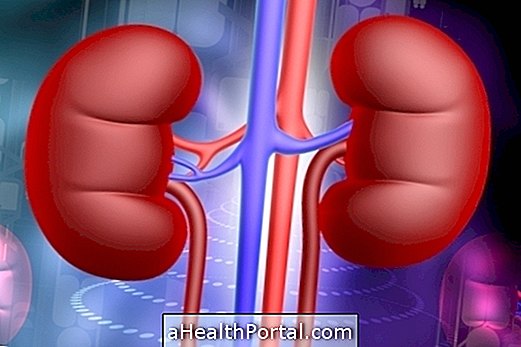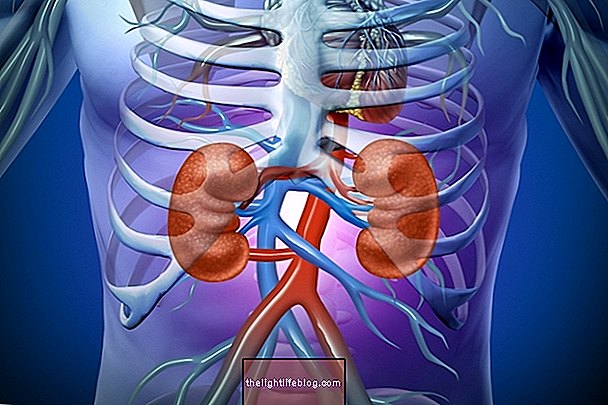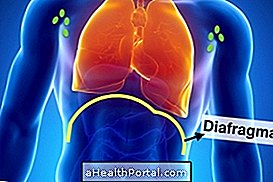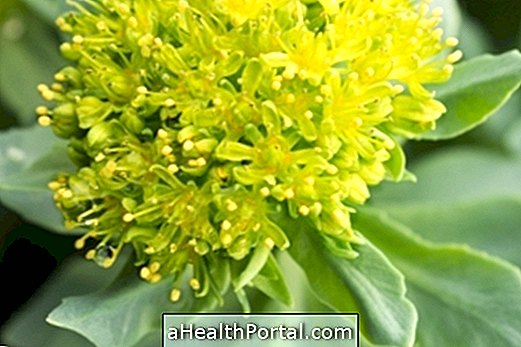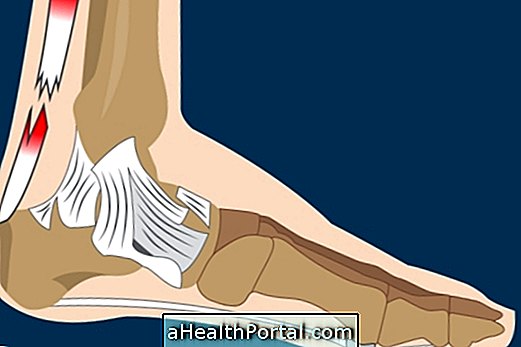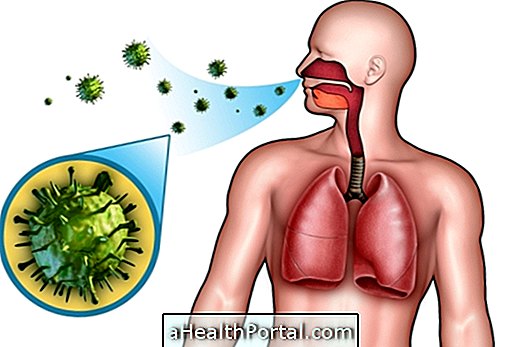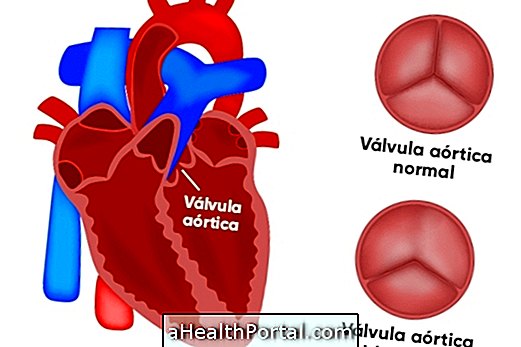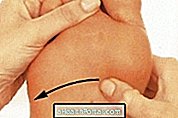The treatment for multiple sclerosis is done with drugs to control the symptoms, prevent the crises or delay their evolution, in addition to physical activity, occupational therapy or physiotherapy, especially in times of crisis, which are when the symptoms reappear, in order to make with them to be eliminated.
Multiple sclerosis is an autoimmune disease that has no cure and that manifests itself through moments of outbreak-remission, which means that the disease can present symptoms, such as numbness and tingling in the arm, which may disappear completely or not. In some cases, the disease does not manifest itself through outbreaks, being progressive, with a worsening and worsening of the general health status and difficulty in mobility. In any case, it is always necessary to follow the treatment indicated by the doctor.

1. Remedies
The remedies indicated for multiple sclerosis should always be recommended by the neurologist after identifying the type of sclerosis that the person has and are indicated to control the crises or the evolution of the disease.
Remedies for crises
The treatment for multiple sclerosis attacks is done with pulse therapy, which is the administration of methylprednisolone, which is a corticoid, directly into the vein, for short periods of time, usually for 3 to 5 days.
After the use of methylprednisolone, the doctor may recommend the use of prednisolone, which is another type of corticoid, orally for 5 days or more.
This treatment helps to reduce inflammation of the nerves, which helps to decrease the intensity and duration of the attacks and relieve symptoms such as partial loss of vision, decreased strength or coordination. However, it should be done for short periods because corticosteroids can cause many side effects such as insomnia, increased blood pressure, increased blood glucose levels, mood swings and fluid retention.
Remedies to control the immune system
Medicines to help control the immune system prevent the immune system from attacking nerve cells, helping to reduce the return of symptoms and slow the progression of the disease, and the use of interferon beta, fingolimod, natalizumab and acetate may be indicated by the doctor. glatiramer or dimethyl fumarate, which are offered by SUS.
Other drugs for the treatment of multiple sclerosis, but which are not available by SUS, include cladribine, laquinimod, ocrelizumab, alemtuzumab and teriflunomide.
Remedies to control symptoms
Treatments to control the symptoms of multiple sclerosis include muscle relaxants, pain relievers, antidepressants, anticonvulsants, medications for fatigue, urinary incontinence, erectile dysfunction, insomnia or difficulty in controlling the bowel, for example.
These medications must be indicated by the doctor individually, according to the symptoms that each person presents.

2. Physiotherapy
Physiotherapy aims to strengthen the muscles, improve the way of walking, balance and motor coordination, being indicated in times of crisis, when there is a worsening of symptoms, causing difficulty in moving the arms and legs, lack of motor coordination, alteration of skin sensitivity, muscle weakness or spasticity, for example.
Motor physiotherapy is generally indicated to prevent muscle retractions, fight numbness, decrease pain, strengthen muscles and train activities of daily living such as walking, brushing teeth and combing hair, according to the person's need.
Respiratory physiotherapy is usually more indicated at a more advanced stage of the disease when the respiratory system is compromised. In this type of physiotherapeutic treatment, small devices such as the flutter, for example, capable of strengthening the respiratory muscles and releasing phlegm, can be used, but breathing exercises are also very important to facilitate breathing and make it more efficient, reducing the suffocation risk.
In addition to physical therapy, other rehabilitation treatments that can help control symptoms, keep the person active and prevent the disease from advancing include psychological, neuropsychological treatment, practicing art therapy, speech therapy or occupational therapy, for example.
3. Practice of physical activity
After being diagnosed with multiple sclerosis, staying active and doing regular physical activity help prevent disease progression or prevent the onset of symptoms quickly. Some exercises that can be indicated are:
- Walk;
- Slow running, trot-type;
- Ride a bike;
- Do localized gymnastics;
- Practice yoga, pilates, especially clinical pilates;
- Aqua aerobics or swimming.
These exercises should be performed in a calm and peaceful environment with a pleasant temperature, because the heat favors perspiration, which aggravates the symptoms of multiple sclerosis. Thus, one must be careful not to keep the heart rate too high, and not to raise the body temperature during physical activity.
Watch the following video and see other exercises you can do to feel better:

It is recommended to practice about 30 minutes of light or moderate physical activity, daily, or to practice 1 hour, 3 times a week, in addition to doing 10 to 15 minutes of relaxation daily.
If during physical activity the person feels breathless, he should stop the exercise immediately and breathe deeply and calmly. The same is indicated if you feel your heart beating fast, shortness of breath, tiredness or sweating a lot.
4. Stem cell transplantation
The autologous stem cell transplant is done by removing stem cells from the person himself, who must undergo treatment with high doses of immunosuppressive drugs to inactivate the immune system, before receiving the stem cells back. This type of treatment allows to “restart” the immune system, which is responsible for damaging the brain and spinal cord in multiple sclerosis.
This type of transplant can be performed in cases of severe multiple sclerosis and difficult to treat, but it is not a treatment that cures the disease, besides being an extremely delicate treatment, and must be performed in centers specialized in stem cell transplantation. Find out how stem cell treatment works.
5. Natural treatment
There are natural treatment options for multiple sclerosis, such as a balanced diet that helps relieve symptoms of constipation or tiredness, for example, increasing the consumption of foods rich in vitamin D or taking therapies such as acupuncture or acupressure. However, these do not replace the treatment indicated by the doctor, they only complement.
Vitamin D overdose can also be indicated as a remedy against multiple sclerosis, since some studies indicate that high levels of vitamin D help to reduce the risk of seizures, reduce disease activity and may also reduce the risk of developing sclerosis. multiple. Learn more about this type of treatment with Vitamin D.

Signs of improvement and worsening of multiple sclerosis
Signs of improvement in multiple sclerosis appear when the person undergoes treatment in accordance with the doctor's guidance, and include decreased symptom intensity, decreased fatigue and recovery of muscle coordination and strength, allowing for better daily activities. This improvement can happen after starting the appropriate treatment, but the time needed to find relief from the symptoms is very individual, because it varies from person to person.
However, when treatment is started late or is not done properly, signs of worsening of multiple sclerosis may appear, which include loss of vision, paralysis, loss of memory or incontinence. In times of worsening, the treatments available should be intensified, but this is no guarantee that the symptoms can be fully controlled. In any case, physiotherapy is a great help to improve the quality of life.
Possible complications
The respiratory complications of advanced multiple sclerosis can often be fatal, due to the involvement of the respiratory muscles and the accumulation of secretions in the lungs, which can cause diseases such as aspiration pneumonia, atelectasis or respiratory failure. Thus, it is recommended to practice physical exercise regularly for life, and always do physical therapy to be able to breathe and move better.
The signs that can serve as a warning are shortness of breath, difficulty in breathing, easy tiredness, ineffective and weak cough, if these symptoms are present, respiratory physiotherapy should be intensified with exercises that favor deep inhalation and forced exhalation.
Was this information helpful?
Yes No
Your opinion is important! Write here how we can improve our text:
Any questions? Click here to be answered.
Email in which you want to receive a reply:
Check the confirmation email we sent you.
Your name:
Reason for visit:
--- Choose your reason --- DiseaseLive betterHelp another personGain knowledge
Are you a health professional?
NoMedicalPharmaceuticalsNurseNutritionistBiomedicalPhysiotherapistBeauticianOther
Bibliography
- FEINSTEIN, Anthony; et al. Treatment of progressive multiple sclerosis: what works, what does not, and what is needed. Lancet Neurol. 14. 194–207, 2015
- SINTZEL, Martina B .; et al. Vitamin D and Multiple Sclerosis: A Comprehensive Review. Neurol Ther. 7. 1; 59–85, 2018
- HART, Felecia M .; BAINBRIDGE, Jacquelyn. Current and Emerging Treatment of Multiple Sclerosis. Am J Manag Care. 22. 6; s159-70, 2016
- GOVERNMENT OF BRAZIL: MINISTRY OF HEALTH. Multiple sclerosis. Available in: . Accessed on 17 Dec 2020
- MAYO CLINIC. Multiple Sclerosis: Diagnosis & Treatment. Available in: . Accessed on 17 Dec 2020
- NHS. Multiple sclerosis treatment. Available in: . Accessed on 17 Dec 2020
- INEURO: INTELLIGENT NEUROLOGY. SUS Drug List - “High Cost”. Available in: . Accessed on 17 Dec 2020
